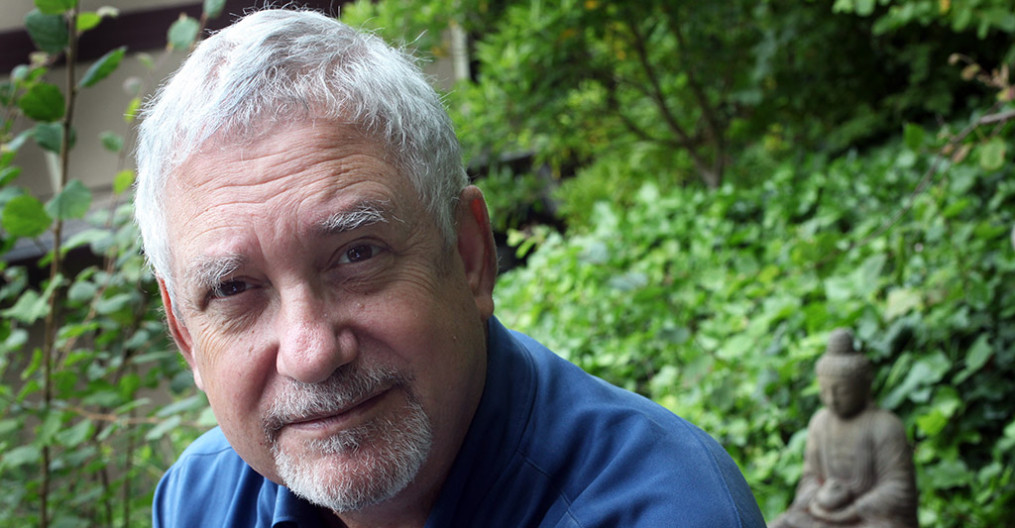When most people think of meditation these days, they think of a practice to make themselves calm. This is not wrong—meditation can do that—but it is an incomplete understanding of what meditation is or can be. When I taught meditation I would always say, “Meditation is not just about being calm, it is about being real.”
I started meditating in college, over fifty years ago. There were few actual teachers of meditation in those days, and none in my town. I learned using dusty old texts on Buddhism and Yoga that I found tucked away in the basement of the college library. Meditation was an exotic thing in those days, something odd, perhaps a bit suspicious. I had a good college friend back then who was called on the carpet by the dean of his residency hall who said to him with perhaps a hint of disdain, “I hear that you have been burning incense in your room, and meditating.”
How far we have come since then! Ever since the Beatles sang “Meditation gives you peace of mind” so long ago, meditation has become as common as working out, with instructional articles, teaching videos, and even smartphone apps to ring the bells for you and help you along. At the same time meditation has mostly become disconnected with its roots in Buddhism and kindred faiths, and has devolved to be just another technique to enhance well-being.
Not that there’s anything wrong with that. These days people need all the help they can get in dealing with stress, anxiety, and confusion. But after my initial introduction in college, I went much more deeply into the study of Buddhist meditation in all its complexity and aspects, and ended it teaching it for more than thirty years. I can’t summarize all that I learned in a few sentences, but I can say, as I said above, that meditation is not just about being calm, but also being real.
So what does that really mean?
One thing that it means is that in meditating on what is real, you are not doing it just for yourself, to enhance your mental state or sense of well-being. You are doing it in the context of connection and care for other people, other forms of life, for everything. Another thing it means is that in meditating on what’s real you are not necessarily abiding in a calm state of mind. In meditating on what’s real you allow and accept any state of mind that might come up, including ones that might be agitated, even disturbing.
There are many methods for meditating to achieve calm, just as there are many kindred practices for tuning in to what’s real. That’s why I call this difference two “families” of meditation. Although there are these two families, they are not mutually exclusive. In order to be able to focus on what’s real, you first need some practice in being calm. And on the path to being calm, you need to acknowledge and accept all that’s going on inside your mind, all the distractions, anxieties, and disturbances.
As a beginner in meditation, I was taught to “follow my breathing” or count my breaths, one to ten. This would be an example of a method to achieve calm. Whatever comes up in the mind, whatever thoughts tend to distract you, you let them go and keep returning your focus to the breath. There are many other ways to focus the mind and achieve calm; Tibetan Buddhists count 21 different methods, from looking fixedly at a candle flame to gazing out over the calm surface of a lake. These methods are in the “calm” family of meditation.
The “real” family of meditation builds on that by gradually letting go of focusing on anything in particular, instead maintaining a steady awareness of whatever comes into the mind, pleasant or unpleasant, good or bad. This style of meditation is perhaps somewhat less prevalent in the popular literature and online instruction of meditation, but I feel that especially now, given the state of the world, it is a most relevant kind, especially because it turns your mind and heart away from yourself and your own problems and allows in the vast universe of other peoples’ problems. What the world now desperately needs are wise people who have dedicated themselves to paying attention to what is actually going on in the world. When you do that, there is nothing calm about it. In some ways the world we live in seems to have gone completely crazy, and you can’t read the news without being inundated, to the point of exhaustion, with the madness of it all.
Part of the meditation on what is real is the effort to hold what you see and hear within the heart of compassion. People are confused, angry, and suffering everywhere you look. It may seem as though one person can do very little about it, and in some sense that is true. But paying attention to it, being aware of it, and holding it in your heart is something one person can do. The more people there are who are willing to do that, the more hope there is that there might be some point where things might turn for the better. But whether they do or not, as a meditator on what is real you can at least bear witness to it all, and when there is an opportunity to help even one person, you can reach out do that. That is meditating on what is real in its most helpful sense.
